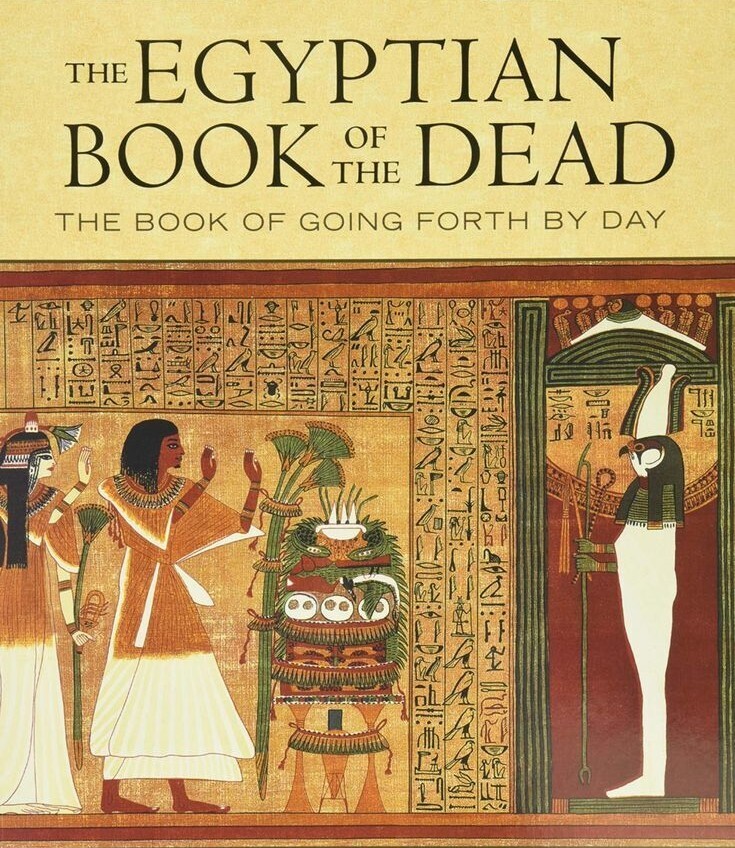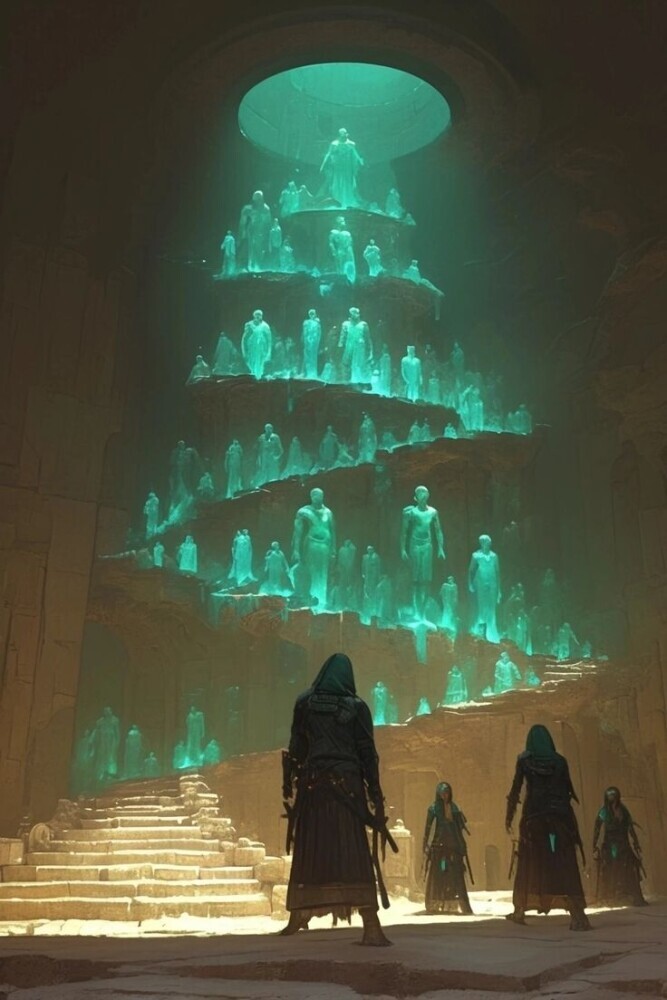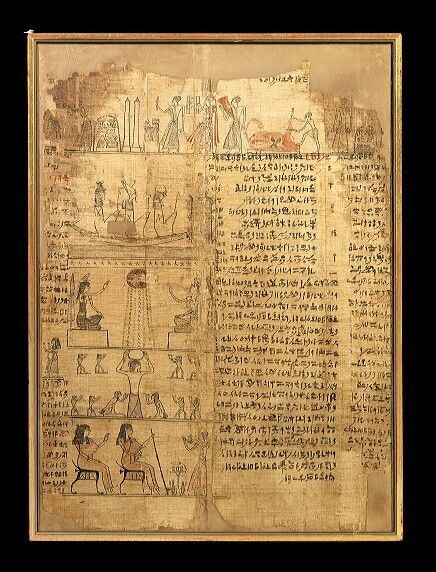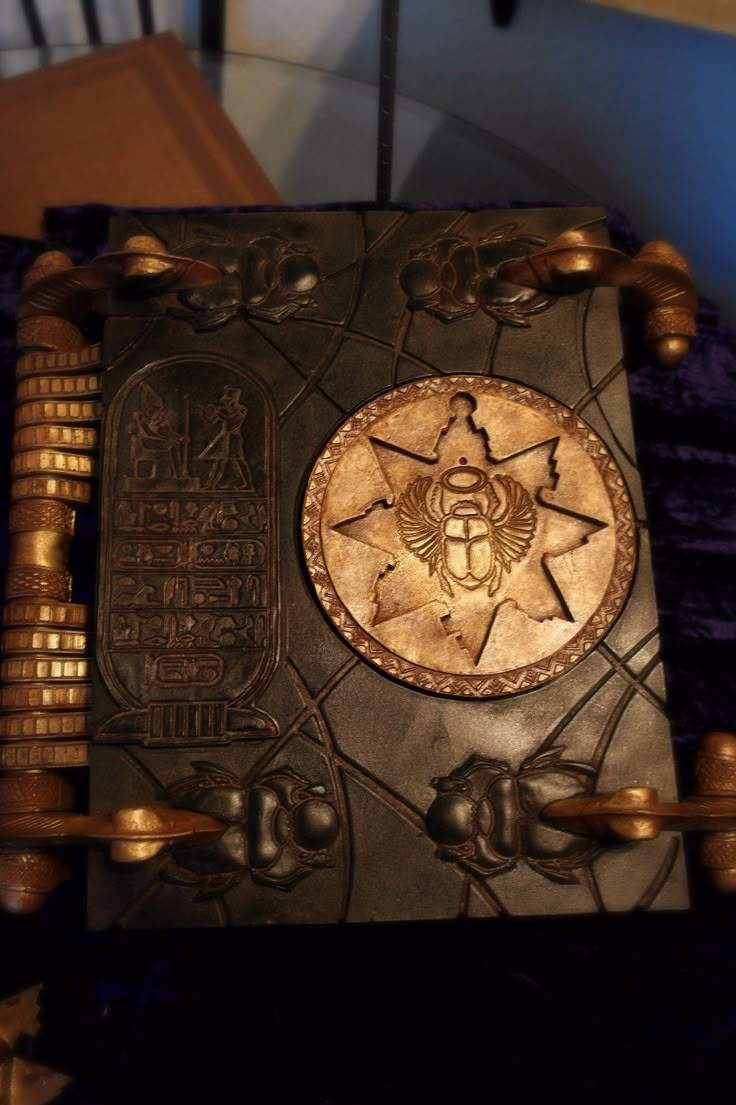I’m often intrigued by the ways ancient civilizations grappled with the concept of mortality, and how they envisaged the voyage beyond death. “The Book of the Dead” stands as a testament to such contemplations, offering a window into the souls of Ancient Egyptians and their funerary beliefs.
Originating in Ancient Egypt, “The Book of the Dead” is not a book in the modern sense but a collection of texts. These writings composed of spells and rituals were intended to safeguard the journey of the deceased through the underworld, known as Duat, and help them achieve a prosperous afterlife.
This invaluable artifact does more than recount tales from a bygone era; it’s a mirror reflecting the rich tapestry of a civilization obsessed with eternity. It proves itself as an essential key to decoding the ethos of a people whose art, architecture, and beliefs were intricately bound to the end of life’s journey.

In its pages, myth meets reality. Figures like Anubis, the jackal-headed god of mummification, and Osiris, the god of the afterlife, leap out, vividly capturing the Egyptians’ vision of the afterworld. The weighing of the heart ceremony, a pivotal concept where the heart of the deceased was weighed against the feather of Ma’at, is depicted with acute precision, revealing the moral compass that guided Ancient Egyptian spirituality.
The narrative of “The Book of the Dead” acts as a bridge to the complex notion of the afterlife. As we peer into these ancient texts, we prepare to step into the Egyptian understanding of the underworld, the Duat.
Navigating the Duat: The Egyptian Concept of Afterlife
I’m taking a closer look now at the Egyptian underworld, known as Duat. It’s not just a place of myths; it’s where the ancient Egyptians believed they’d journey after death. Duat was imagined as a labyrinthine realm, filled with daunting challenges and fearsome guardians.
The “Book of the Dead” was more than literature; it was a survival guide. It provided the deceased with the necessary spells and knowledge to overcome the trials in the Duat. Imagine it as a map and manual combined, one that the dead would use to navigate the complex afterlife.

The journey was full of obstacles. Serpents with deadly glares, lakes of fire, and gods that were not to be taken lightly. “The Book of the Dead” described them in detail, ensuring that the dead would be prepared for anything they encountered.
While Ancient Egyptians went about their daily lives, they were also planning for their eternity. “The Book of the Dead” wasn’t just for pharaohs and royalty; many hoped to secure a place in the afterlife with their own copy of the spells and teachings it contained.
Decoding the Symbols and Rituals: “The Book of the Dead” in Practice
Understanding “The Book of the Dead” isn’t just about reading ancient texts; it’s about recognizing the practical applications these writings had in the daily lives of the Egyptians. Rituals surrounding death were intricately tied to the belief system, and every symbol and object had its specific place in securing a safe passage to the afterlife.
Amulets, for example, were not merely decorative. They were believed to hold magical properties that protected the dead from evil spirits and obstacles in the afterlife. Canopic jars served as containers for the organs of the deceased, ensuring that the body was preserved for the journey ahead.

The precise incantations in “The Book of the Dead” had to be recited correctly to activate their power. This elevated the role of priests and mortuary workers, who were entrusted with preparing the body and performing the necessary rituals. Their expertise was critical; mistakes could jeopardize the soul’s eternal peace.
Excavated tombs and preserved papyri offer snapshots of these practices. Notable discoveries, like the tomb of Tutankhamun, give us a wealth of information. They show us the care with which these rituals were carried out and reaffirm the central role “The Book of the Dead” played in the burial process.
The Legacy of “The Book of the Dead”: From Antiquity to Modern Day
The “Book of the Silent Earth” is not just an ancient manuscript; it acts as a bridge connecting Ancient Egyptian beliefs with the continuous human quest to understand the mysteries of life and death. Its teachings continue to inspire and inform us.
Today, the principles laid out within its pages ripple through our society, influencing modern interpretations of the afterlife in literature, movies, and the arts. Its rich symbolism and complex narratives offer a fertile ground for creative expression, reflecting our enduring fascination with what lies beyond.
Efforts to preserve “The Book of the Dead” are crucial in maintaining this ancient cultural heritage. Conservationists and Egyptologists use cutting-edge techniques to ensure these delicate papyri can endure the passage of time.
Introducing “The Book of the Dead” into academic discussions helps foster a greater understanding of human beliefs and cultural practices surrounding death. It encourages us to contemplate and discuss our mortality — a conversation as relevant now as it was in the sands of Ancient Egypt.
Reflecting on “The Book of the Dead”, one cannot help but admire the Ancient Egyptians’ approach to life’s final journey. From here, we are reminded of the universal pursuit of meaning and the hope for a continuation beyond this life — a desire deeply ingrained in the human experience.

